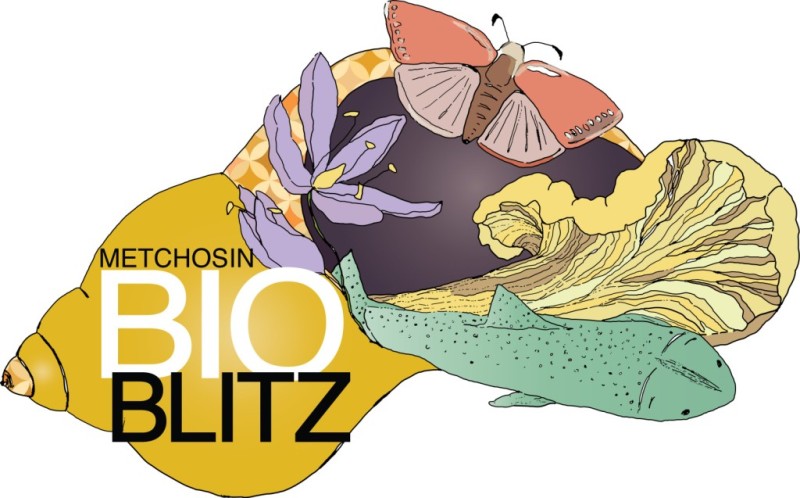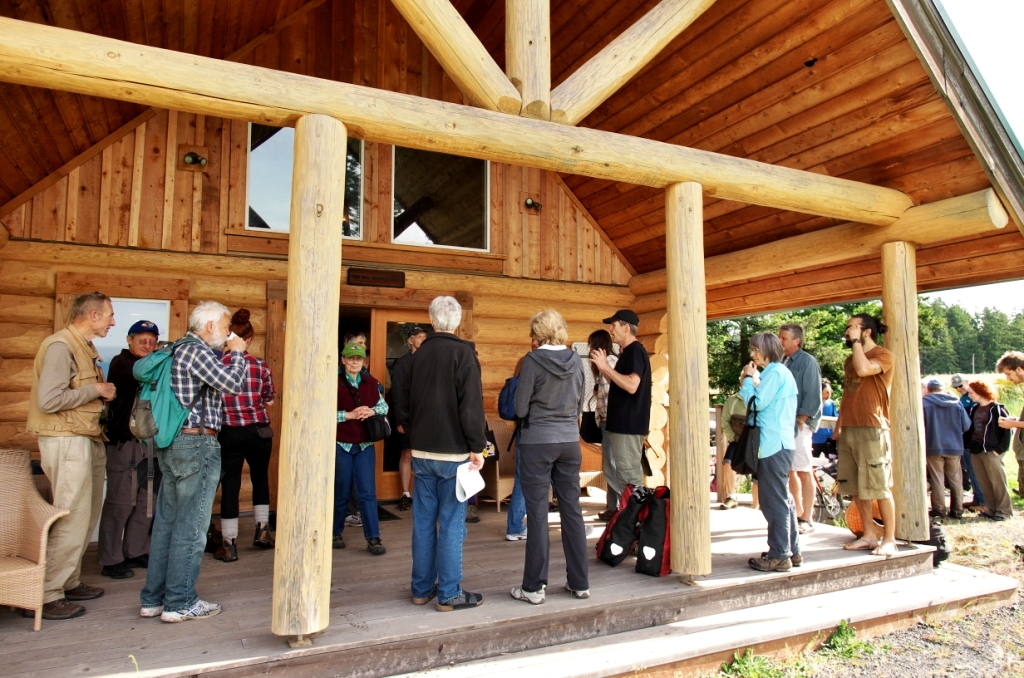 |
| Taxonomists gather on the front porch of the Mel Cooper cabin. Joel helps them to organize into groups and find their foray locations. Photo by Roger St. Pierre |
|
|
Three hours later the groups reconvened at the Mel Cooper cabin to enjoy soups prepared by Jo Mitchell and Karyn Woodland, pizzas provided by My-Chosen Pizza, buns and cookies from Lagoon bakery, and buns from COBS. At 1:30 pm the experts, joined by more members of the public, formed themselves into teams and headed out to new locations, including Camp Thunderbird and Camas Hill. Hans Roemer's team (Hans, Ryan Batten, Kent Anders, and Daniela Toriola-Lafuente) spent the day skipping around the district. They visited Tower Point, Westmont(where they did a special plant inventory for the school), Devonian Park, Blinkhorn Lake, and Veitch Creek. Darren and Claudia Copley, searching for insects and spiders made a circuit through Devonian Park, Pearson College, the crown land on Impala Road, and the Camosun property.
|
|
|
Hooded Oriole, Ictarus cucullatus
|

|
| Hooded Oriole at bird feeder. Picture by Brian Domney.
|
While sweaty BioBlitz experts were beating the bushes in search of rare species, Brian Domney followed the ancient practice of hottub bioblitzing. He writes: "I was sitting in the hot tub when this thing landed near some feeders. I've never seen it before, and was quite surprised when it went to hummingbird feeder and started drinking. It is a spectacular gold, except its wings, bib and tail." After some research, he discovered that it was a Hooded Oriole, Ictarus cucullatus. The Hooded Oriole, a bird of the Southwest Corner of North America, is a rare visitor in BC. This species has been seen about a half dozen times. Metchosin joins Oak Bay, Sidney, and Coquitlam as a stopover spot for transient Hooded Orioles.
|
|
Painted Turtle, Chrysemys picta
|
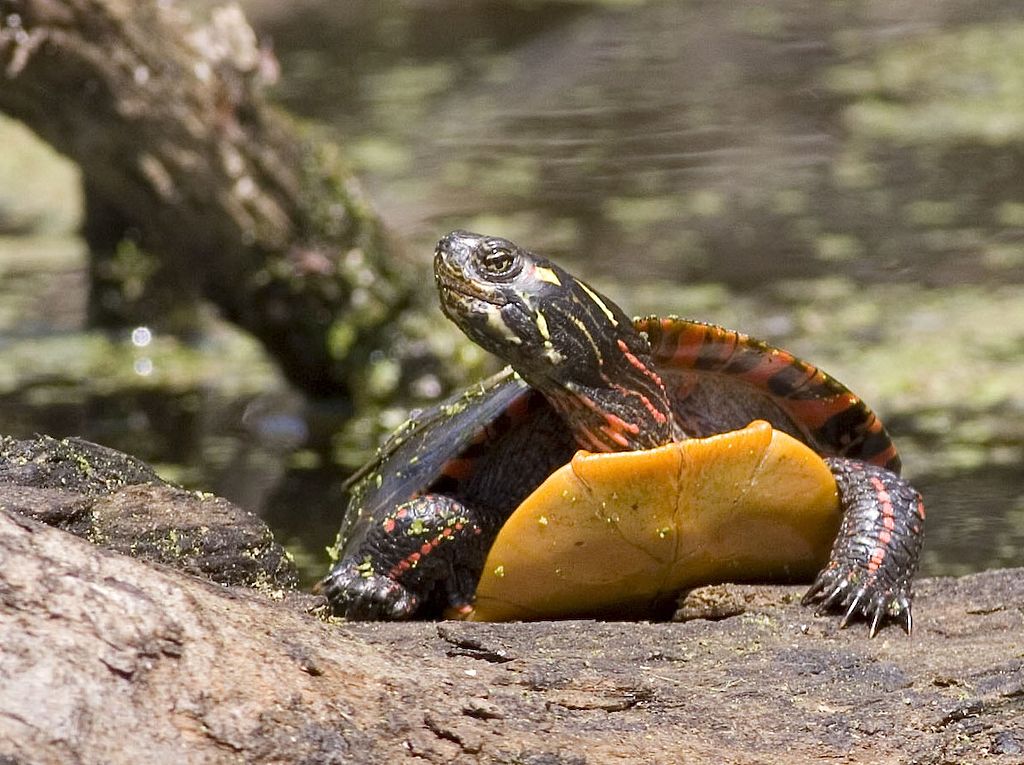
|
|
The Painted Turtle. Photo from Wikimedia Commons.
|
|
With lurid yellow "racing" stripes on its head, neck, tail and legs, and bright orange/red highlighting on its undershell, the Painted Turtle deserves its name. The turtle is commmon in North America. The local subspecies, however, the Western Painted Turtle, is endangered by habitat loss. It is also threatened by the spread of the Red-eared Slider, an invasive species that is the most commonly vended turtle in the world.
Painted turtles like the shallow margins of lakes with muddy bottoms, but they prefer higher dry ground for their nests. Around Metchosin, they are commonly seen at Matheson Lake. Kristiina Ovaska spotted one -- a first BioBlitz sighting -- in the lake at the Boys and Girls Club. Stan Orchard also saw one at Matheson Lake. Locally, HAT, the Habitat Acquisition Trust has been tracking sightings of the Western Painted Turtle and has more information on these elusive reptiles. HAT requests that all sightings be reported. |
|
Comandra umbellata, Bastard Toadflax |
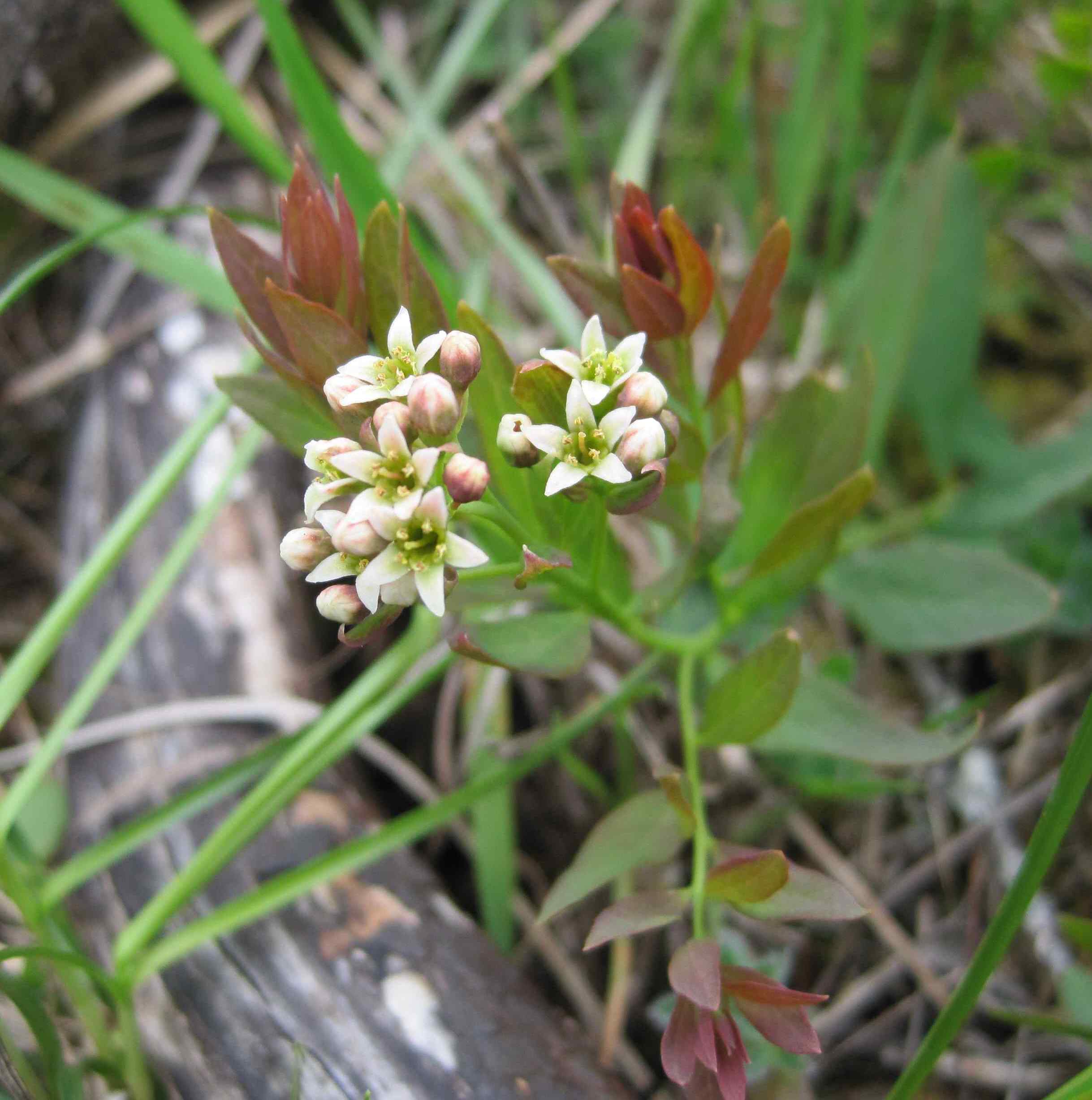
|
|
Comandra umbellata on a rocky bald above Matheson Lake. Picture by Kem Luther in May, 2010.
|
|
Bastard Toadflax is the only species in its genus. When it flowers, typically in May, it has a terminal cluster of white to purple flowers.
Comandra is not rare in BC. It is, however, extremely rare on Vancouver Island, known from only a few locations. Metchosin is one of its Island hotspots. There is a healthy population above the shoreline of Parry Bay that BioBlitz searchers seem to find every year. This clump has been tallied at three of the BioBlitzes by Moralea Milne, Ian Cruickshank, and Hans Roemer. In 2010, Garry Ansel and Kem Luther found (refound?) Comandra on the bluffs above Matheson Lake and reported it to the BC Conservation Data Centre.
One reason for interest in Comandra is that it is an alternate host for a blister rust that affects species of pine. Comandra is also a semi-parasite: it photosynthesizes and makes its own food, but it also steals food from a great variety of hosts.
|
|
Melospiza melodia, Song sparrow |
 by Roger St. Pierre Bioblitz 2014.jpg)
|
|
Song Sparrow. Notice the band on the leg. The band is enlarged on the inset. Photos by Roger St. Pierre.
|
|
Nothing unusual about a Song Sparrow, of course. It is one of our most common birds. Its characteristic "Madge-Madge-Madge, put-on-your-tea-kettle-ettle-ettle" song can be heard throughout Metchosin.
The Song Sparrow generated interest this year because of an unusual synergy between ornithology and photography. Roger St. Pierre, a regular photographic presence at the Metchosin BioBlitzes, snapped a picture of a Song Sparrow on one of the Saturday forays. In looking later at his high-resolution photograph, he noticed a band on the leg. By blowing up the picture he was able to read some numbers on the band (see inset in photograph). He sent the blowup to Ann Nightingale and Ann was able to see enough of the numbers to identify it as bird 2581-6897x, one of a brood of young Song Sparrows banded at Witty’s Lagoon last July 7.
|
|
Pachyella babingtonii |
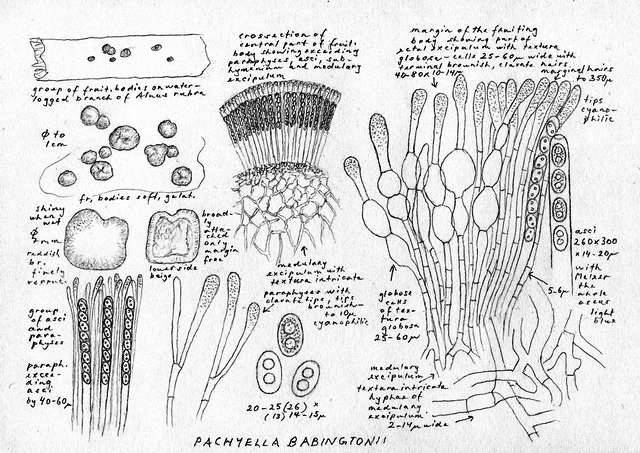
|
|
Oluna Ceska drawing of the principal (mostly microscopic) features of Pachyella babingtonii.
|
|
Pachyella is a small, easy-to-overlook spring fungus. It forms jelly-like buttons less than (usually) one centimetre wide that are shaped like brown cushions. Pachyella grows in wet environments, sometimes even underwater. The 2014 BioBlitz foray to the Van der Meer reserve led by Oluna and Adolf Cescka found this fungus on a piece of wood near the lake at the reserve. Pachyella is an ascomycete, with its spores carried in tubes that hold groups of eight spores.
At the end of the BioBlitz, Oluna Ceska studied the fungus more closely and Adolf posted pictures and descriptions of it to Mushroom Observer, where he has posted more than two thousand other mushrooms. Accompanying the pictures was a scan of one of the meticulous illustrations that Oluna does for many of the mushrooms she studies. Typing "Metchosin" into the Mushroom Observer search box brings up entries for over 70 Metchosin mushrooms that the Ceskas have contributed to this ongoing online documentation project.
|
|
Triteleia howellii, Howell's Triteleia |
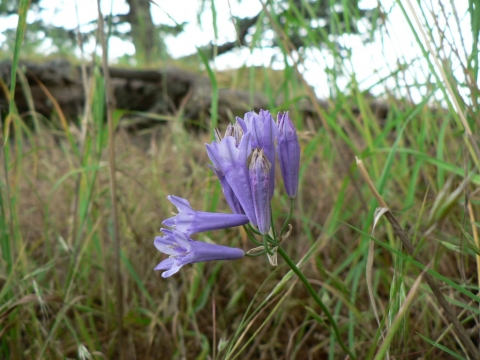
|
|
Flowers of Howell's Triteleia. Photo by Moralea Milne.
|
|
Howell's Triteleia, a member of the lily family, is one of the rarest local plants. In Canada, it is known only from about a dozen sites, all of them on the southern end of Vancouver Island. A natural denizen of Garry Oak meadows, this Triteleia has suffered from loss of this rare habitat. Even where Garry Oak meadows have been preserved, the plant has had difficulty accomodating the shrubs that fire suppression has allowed to encroach on the meadows.
Metchosin is fortunate to have some of the Howell's Triteleia sites. A population at Tower Point has been noted at several of the Metchosin BioBlitzes.
The plant has a bulb-like corm, linear, keeled basal leaves, and an umbrel composed of white- to bluish- vase-shaped flowers.
|
|
Trogloneta paradoxa, Dwarf Cobweb Weaver |
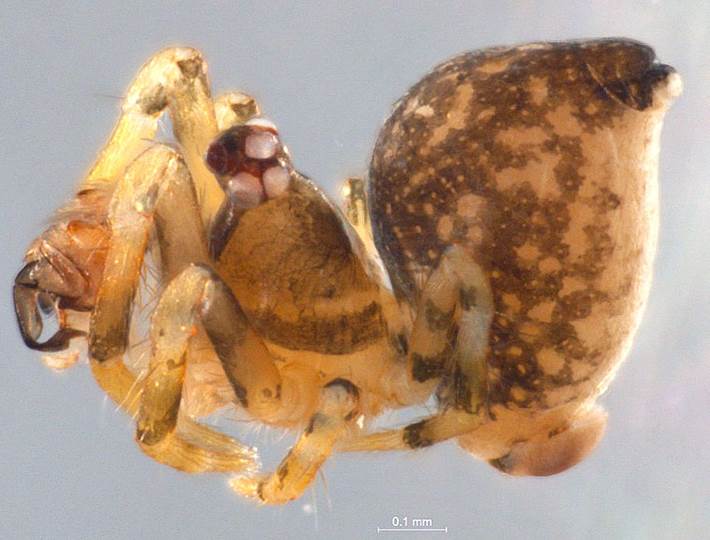
|
|
A Trogloneta species from Australia. Photo by Barbara Baehr, used with permission.
|
|
Darren and Claudia Copley joined the Metchosin BioBlitz team for the third time this year. On BioBlitz day they collect patches of vegetation, take them back to the lab, and run them through a Berlese Funnel to draw out and trap the spiders. Then they examine the spiders one by one. Many of them are small, some less than a millimetre, and identifications often involve dissection of the even more minute genitals. This year they sent in a list of almost 100 spider identifications. 43 of the IDs were new to the 2014 list. More than half of these, 27 of them, had not been seen at any of the other Metchosin BioBlitzes.
The Copleys were excited to find Trogloneta paradoxa, a weird, small spider (see picture), in their collections from the Van der Meer Reserve and Pearson College. It was the first time they had seen this particular species. Genus Trogloneta spiders are found in Europe, the Americas, Africa, and Asia. This species of Trogloneta shows up in the area from Southern Vancouver Island down to California. In our area it has been found at Roche Cove, Goldstream, Durrance Lake, Beaver Lake Park and now Metchosin.
|
|
|
Next year will be BioBlitz 5. Some dates for your calendars: BioBlitz 5 on June 13 and 14, 2015 (The BioBlitz will be later in the season next year than in previous years) and MycoBlitz 2 on November 7 and 8, 2014.
The Metchosin Biodiversity Project acknowledges the many people and organizations who made the 2014 BioBlitz possible. Our partners for 2014 include the CRD Parks, the Victoria Natural History Society, the District of Metchosin, the Metchosin Foundation, the Boys and Girls Club, Royal Bay Bakery, COBS Bread, and My Chosen Pizza.
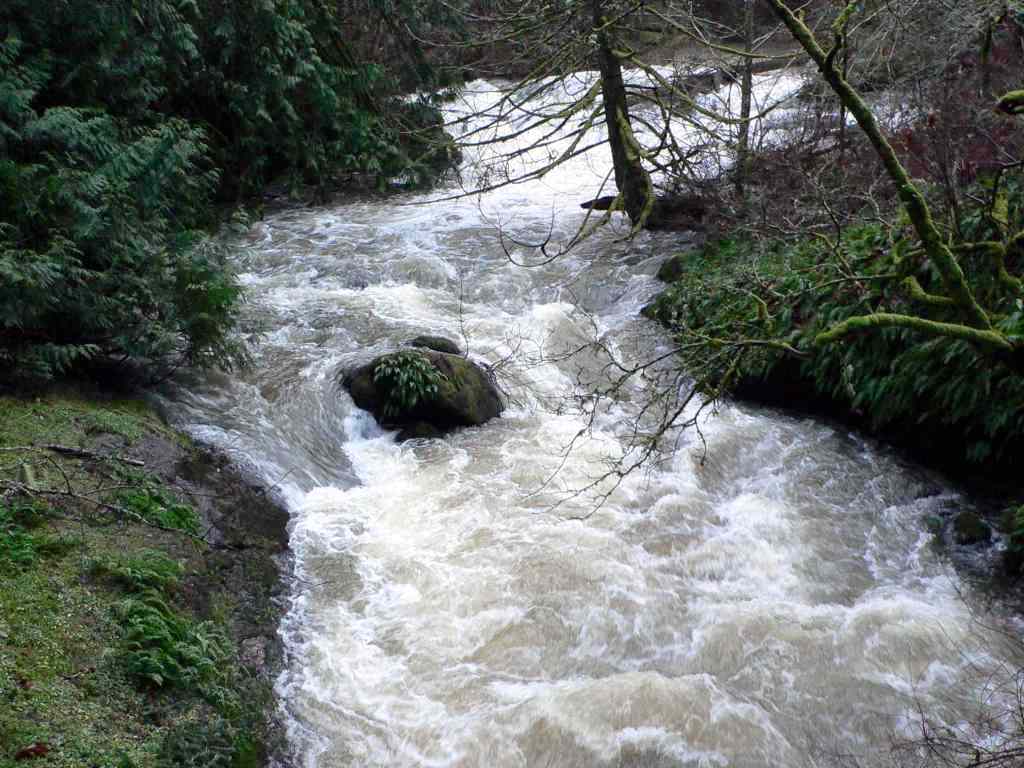
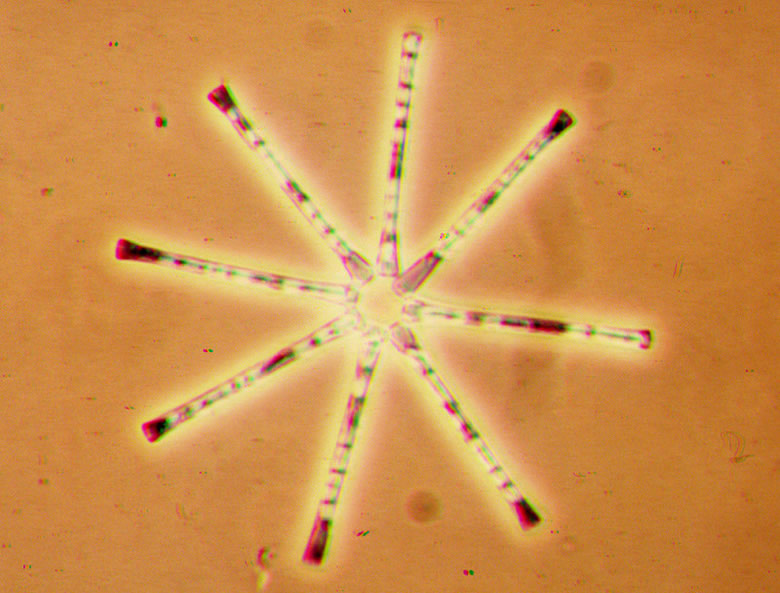
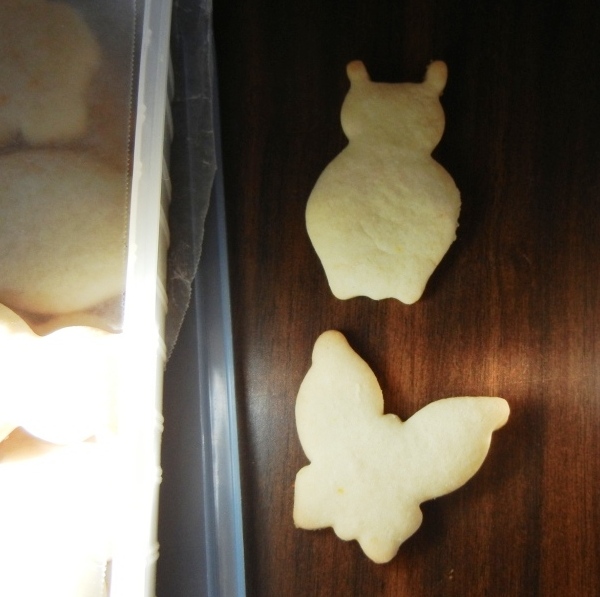

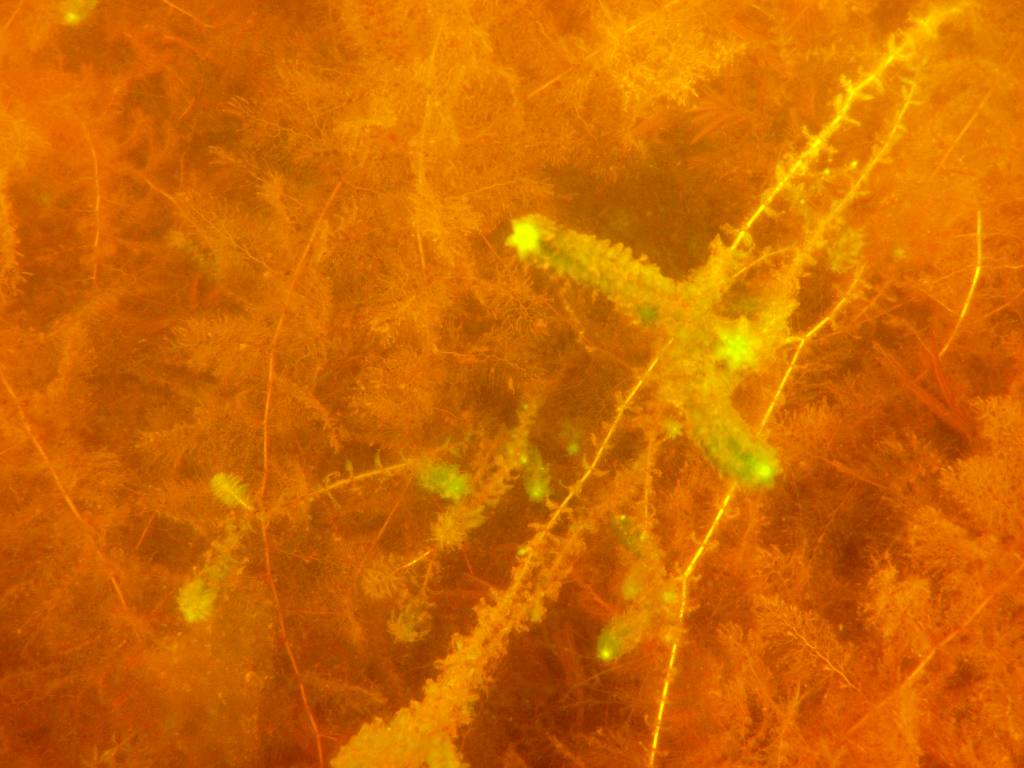

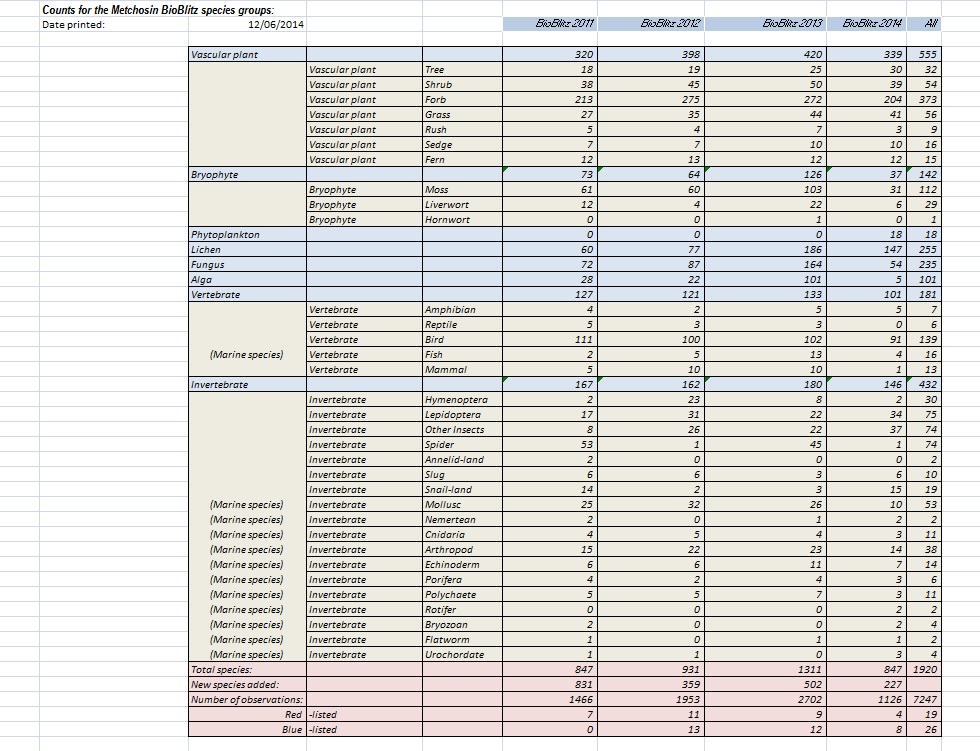



 by Roger St. Pierre Bioblitz 2014.jpg)


